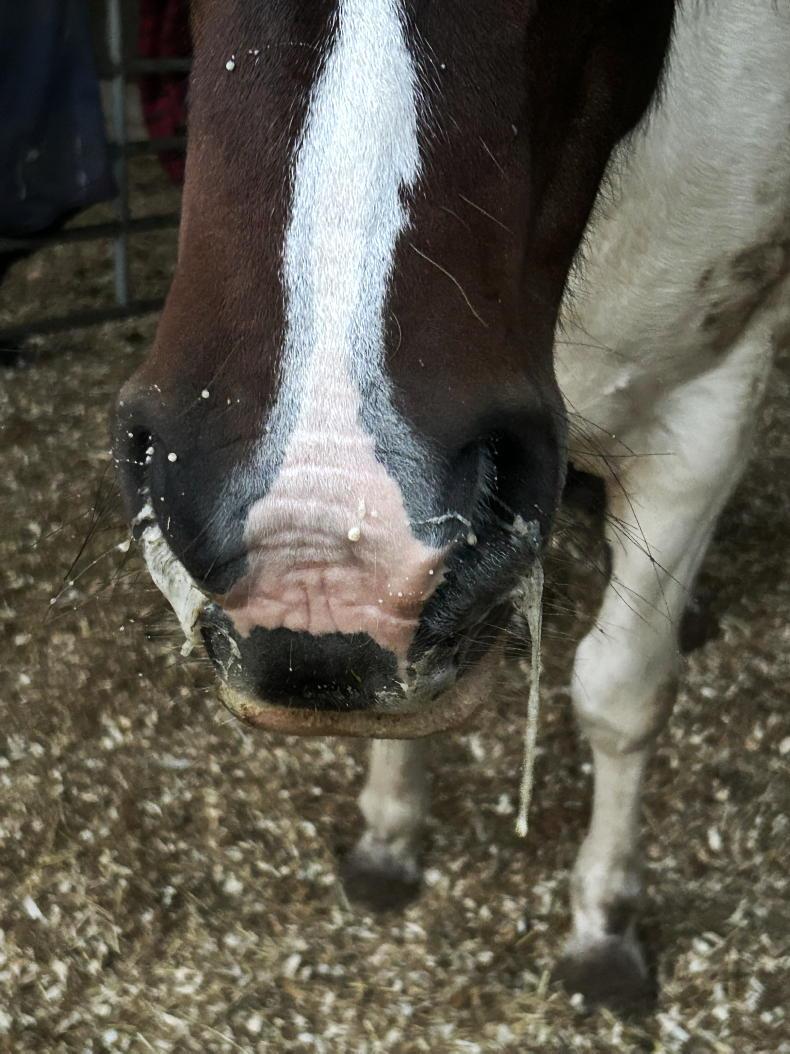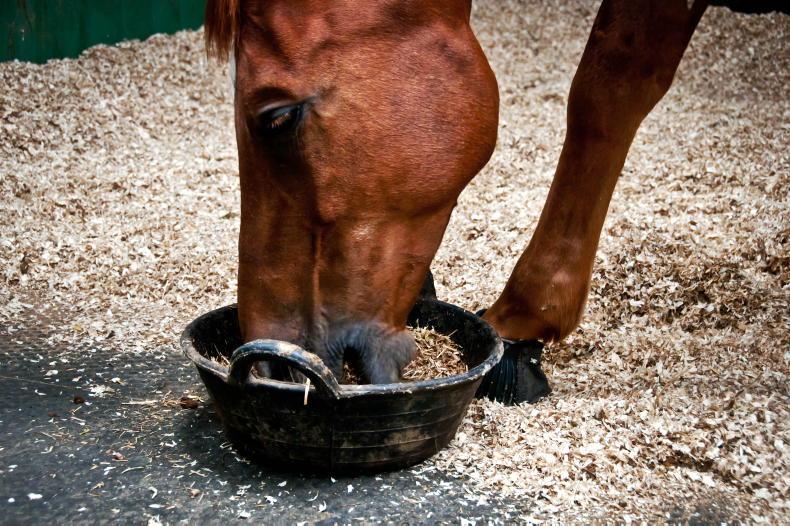THIS week, we had a case of choke in one of the horses in our yard. Over the years, I have read about choke many times and have shared veterinary articles but until now, had never seen a case of it play out in front of me.
The first thing that struck me was how easy it could be missed, Flicka, the horse in question, had just come in from the field, maybe five minutes, and was standing quietly above her haylage on the ground in her stable. The evening light was failing and, as Flicka’s owner was doing the waters and hard feeds, noticed the mare was struggling. She was standing very quietly however and there was no noise to speak of. It was a hard watch to see the mare’s neck spasm, the retching and the dripping saliva and food particles from her nose. Thankfully, after veterinary intervention, Flicka’s blockage cleared and she was back eating normally by the morning.
What exactly is choke?
Choke is a somewhat misleading name, as if a horse develops it, their airway remains clear and they can still breathe without obstruction. It’s the oesophagus, the tube that carries food from the throat to the stomach along the lefthand side of the lower neck, that has become blocked. So, while choke warrants prompt veterinary intervention to try and relieve it as rapidly as possible, it is not generally life-threatening in the short term.
What can cause it?
Choke occurs when a wad of food or a swallowed object gets wedged in the oesophagus (gullet). The most common location is at the end of the oesophagus, just before it opens into the stomach. Excessively dry food, especially unsoaked beet pulp, is a common cause. Beet pulp will swell once it gets wet, so if eaten before it has been adequately soaked, it is inclined to block the oesophagus at the entrance to the stomach. Oaten straw or dry chaff is another possible culprit, although these are rarely used nowadays. In Flicka’s case, it was being a bit too enthusiastic with her haylage.
In individuals that bolt their food without grinding it up adequately, large chunks of food get stuck. Horses that chew and swallow foreign objects, such as pieces of wood or timber, may end up with them lodged in their oesophagus, e.g. crib-biters. Animals with dental issues, such as missing and/or painful teeth, sharp edges, a parrot mouth, dental overgrowths or malocclusions will have difficulty chewing their food properly and are also at a higher risk of blockage.

What are the signs of choke?
Affected horses often have rather alarming quantities of frothy saliva and particles of food oozing out of their nostrils and/or dripping from the mouth. They typically look quite uncomfortable and may stand with their head and neck extended. The animal may retch and make repeated efforts to swallow in order to clear the blockage, but is unable to do so. The horse may also cough and is typically not interested in eating.
A raised heart rate due to distress and discomfort is also common. Occasionally, the blockage can be seen or felt under the skin on the left-hand side of the neck.
How to manage it
If you find a horse with choke, contact your vet promptly. The sooner the blockage can be relieved, the greater the chances of a rapid and complete recovery. It’s also quite an unpleasant experience for the animal, so the sooner it’s cleared the better.
Remove food and water while waiting for assistance. Most horses won’t eat, but the occasional individual may try to continue, which makes the condition worse. It’s a good idea to have a couple of clean buckets and plenty of warm water to hand in preparation for attempts to flush the oesophagus. Avoid the temptation to try and massage or push the blockage to clear it – this greatly increases the risk of permanent damage to the oesophagus.
Treatment options
Most cases are sedated initially and given some pain relief, and maybe a muscle relaxant. Sedation will cause the horse to lower their head and allow the saliva to run out onto the ground, rather than down into the lungs where it can give rise to a severe chest infection (aspiration pneumonia). Sedatives also cause relaxation of the muscles of the oesophagus, which can help to release the blockage. Some cases will spontaneously resolve with medication alone, but if it persists, the vet can pass a stomach tube to confirm the location of the choke. Flushing the tube with warm water can soften the blockage, allowing it to either be passed into the stomach or washed back up the tube.
Persistent cases
If the blockage is caused by a foreign body, an endoscope (flexible camera) may be used to visualise the item and hopefully retrieve it. If none of these methods works, surgery may be performed as a last resort, to open into the oesophagus and manually remove whatever is wedged in it. Surgery carries quite a high complication rate due to risk of scarring, which can result in permanent narrowing of the oesophagus and ongoing difficulties in swallowing.
Prevention
Ensure horses have constant access to plenty of fresh, clean drinking water and dampen dry feeds. Always soak beet pulp in twice its volume of water for at least a couple of hours before feeding it to horses. Beet pulp nuts take longer to soak than the shredded form – it’s safe to feed when the nuts are no longer distinguishable. Apples and carrots should be cut up or divided into quarters before being fed.
Annual dental check-ups will ensure any sharp edges and infected or broken teeth can be identified and treated accordingly. Greedy horses that consistently bolt their food may benefit from the placement of a few large, smooth stones in their feed pot to make them slow down. A beach is a good source of these.
Outlook
Complications are more likely if the choke results in damage to the lining of the oesophagus, or if treatment is delayed, leading to scarring. Happily, the vast majority of cases will make a swift and uneventful recovery.




 This is a subscriber-only article
This is a subscriber-only article
 It looks like you're browsing in private mode
It looks like you're browsing in private mode






SHARING OPTIONS: